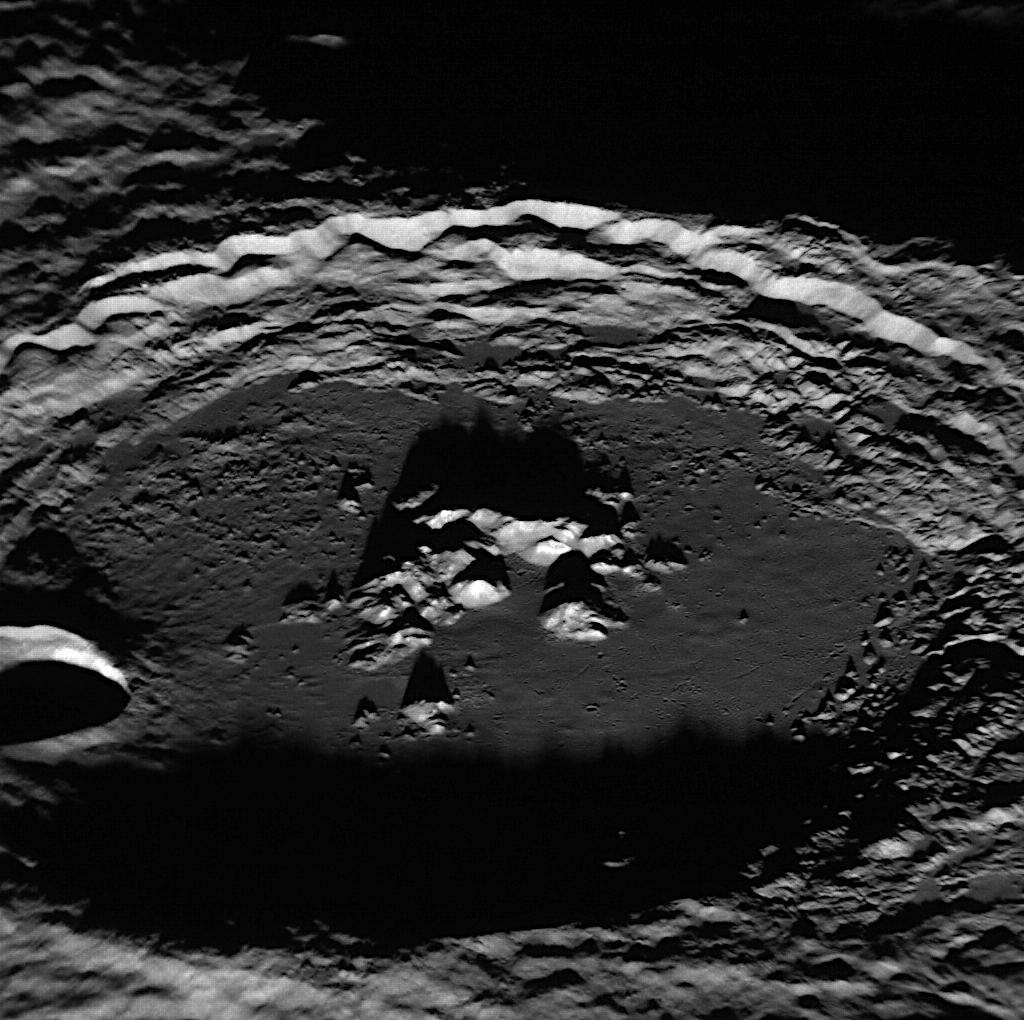[/caption]
The 68-mile (109-km) -wide Amaral crater on Mercury reveals its brightly-tipped central peaks in this image, acquired by NASA’s MESSENGER spacecraft on Feb. 4, 2012. Long shadows are cast by the crater’s peaks and rugged rim (north is to the left.)
The image was acquired as a high-resolution targeted observation with MESSENGER’s Narrow-Angle Camera (NAC) on its Mercury Dual Imaging System (MDIS).
Amaral’s bright peaks were first spotted during MESSENGER’s first flyby of Mercury in Jan. 2008. With a smooth floor, visible ejecta and small secondary craters, Amaral appeared noticeably younger than the heavily cratered surface around it.

Its central peaks also attracted astronomers’ interest, as they were seen to possess a striking blue hue in color-enhanced images that likely indicates rocks with different composition from the surrounding surface.
Amaral’s peaks resemble those of the slightly larger crater Eminescu, which is now known to contain recently-discovered features called hollows. It’s not yet known if Amaral also contains hollows, but it’s suspected that they may be present on the tips of the peaks.
The crater is named after Brazilian artist Tarsila do Amaral. She lived from 1886 to 1973 and is considered to be one of the leading Latin American modernist painters.
Image credit: NASA/Johns Hopkins University Applied Physics Laboratory/Carnegie Institution of Washington.


More planet Mercury stories please UT!
Ditto!
Earth, Venus and Mercury walked into a bar…
Oooh, wrong story.
I’m very curious — if you look a little bit below “3 o’clock” on the right side rim of Amaral in that image, there’s a feature which looks more like a cookie cutter circle than a crater rim, just from the way that the light is hitting the lower and upper edges of the feature. What would cause that look to the light along the lower “edge” or rim of the feature?